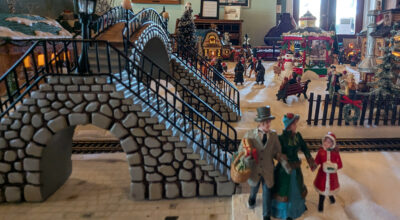Religious reality: Even the unaffiliated seek spiritual fulfillment
Published 12:00 am Tuesday, December 1, 2009
By Susan Campbell
The Hartford Courant
HARTFORD, Conn. ó When she was growing up in central New Jersey, Hanh Le’s family members identified themselves as Buddhist and Confucian.
There is an altar set up for her now-deceased grandparents, and during Tet, the Vietnamese new year, the family goes to Philadelphia, where their loved ones’ ashes rest. But Le, a first-year student at Wesleyan University, considers herself secular. And growing up, only one of her friends was particularly religious.
“We loved him for who he was,” says Le. “We called him the church boy.”
Le falls squarely into the religiously unaffiliated, people who when asked their religious group answer “none.”
The “nones” made news recently when Trinity College released its American Religious Identification Survey 2008, the third in a landmark series, which, among other things, says that one in five Americans does not have any religious affiliation. And the group continues to grow, according to the survey.
Attendance is also down at mainline Christian churches. The impetus, the survey says, comes not from other religions but from “a rejection of all forms of organized religion.” In addition, 27 percent of Americans do not expect a religious funeral at their death ó roughly the same percentage of Americans who did not participate in a religious initiation ceremony such as christening, circumcision, baptism or a bar or bat mitzvah.
Religion, however, retains a fairly strong hold on the culture ó so strong that some unaffiliateds, such as Le, are considering studying theology. Eventually, she’d like to go into counseling.
“I like to understand where people are coming from,” Le said. “Religion is such a huge part of our culture, whether you’re affiliated or not. To understand people, you have to understand religion.”
Being unaffiliated has not kept Le from volunteering with such groups as Food Not Bombs, whose members gather, prepare and share meals with people in Middletown. But “it’s not a religious activity, what we do,” Le said. “It’s a human activity. There’s a law that transcends the legal and divine law that really brings people together as human beings. Jesus’ sermon on the mount was before there was a Christian movement. This guy was talking about things that people can understand as human beings ó not because they wanted to worship him but because he was talking about common truths we know should be a part of us.”
On Easter morning, Jude Yaeger planned to pick up her mother in Newington and attend a Catholic Mass. During lunch afterward, however, discussing religion wasn’t on the menu.
“She knows I’m just there for her,” says Yaeger, a yoga instructor. Yaeger attends a prayer and meditation group that grew out of her and her friends’ mutual search for a spiritual life. The group began meeting in each other’s homes about three years ago, she says, when the friends discovered their mutual dissatisfaction with traditional worship services.
“It’s been a learning process,” Yaeger said. “We’re kind of feeling our way.”
What clergy often hear is that such people consider themselves spiritual but not religious. In a Christian context, says the Rev. Donna Manocchio of Rocky Hill Congregational Church, clinging to spirituality without religion is akin to saying you love Jesus, but you don’t like any of his friends. (That statement, she says, is not original with her.)
Instead, Manocchio says, “I don’t want to yell at people, ‘So why are you only here on Easter and Christmas?’ But sometimes I would like to ask that question. As a minister, you try to say to people, ‘This might be a place where you might find something that will help your life be a little less chaotic. We can’t make your life less chaotic, but you might find some peace in chaos.”Some clergy members say the Trinity survey highlights the reality of what they see every holiday.
Rabbi Irwin Kula, author of “Yearnings: Embracing the Sacred Messiness of Life,” says, “The really interesting story is how many ‘nones’ we already have inside our institutions. If you have 1,000 families, and 85 percent are showing up once a year, you’ve got a lot of ‘nones’ on the inside.
“The challenge is to say, ‘OK, it’s a new ballgame, a new world,’ and now, the environment is going to be whether you can take your inherited tradition, wisdom and practices and translate it into a resource that anyone can use. The way the world functions is changing, and, at least in America, people are increasingly going to use religion as a resource toolbox, rather than a source of identity. The boundaries are coming down. The ‘nones’ are coming clean.”


